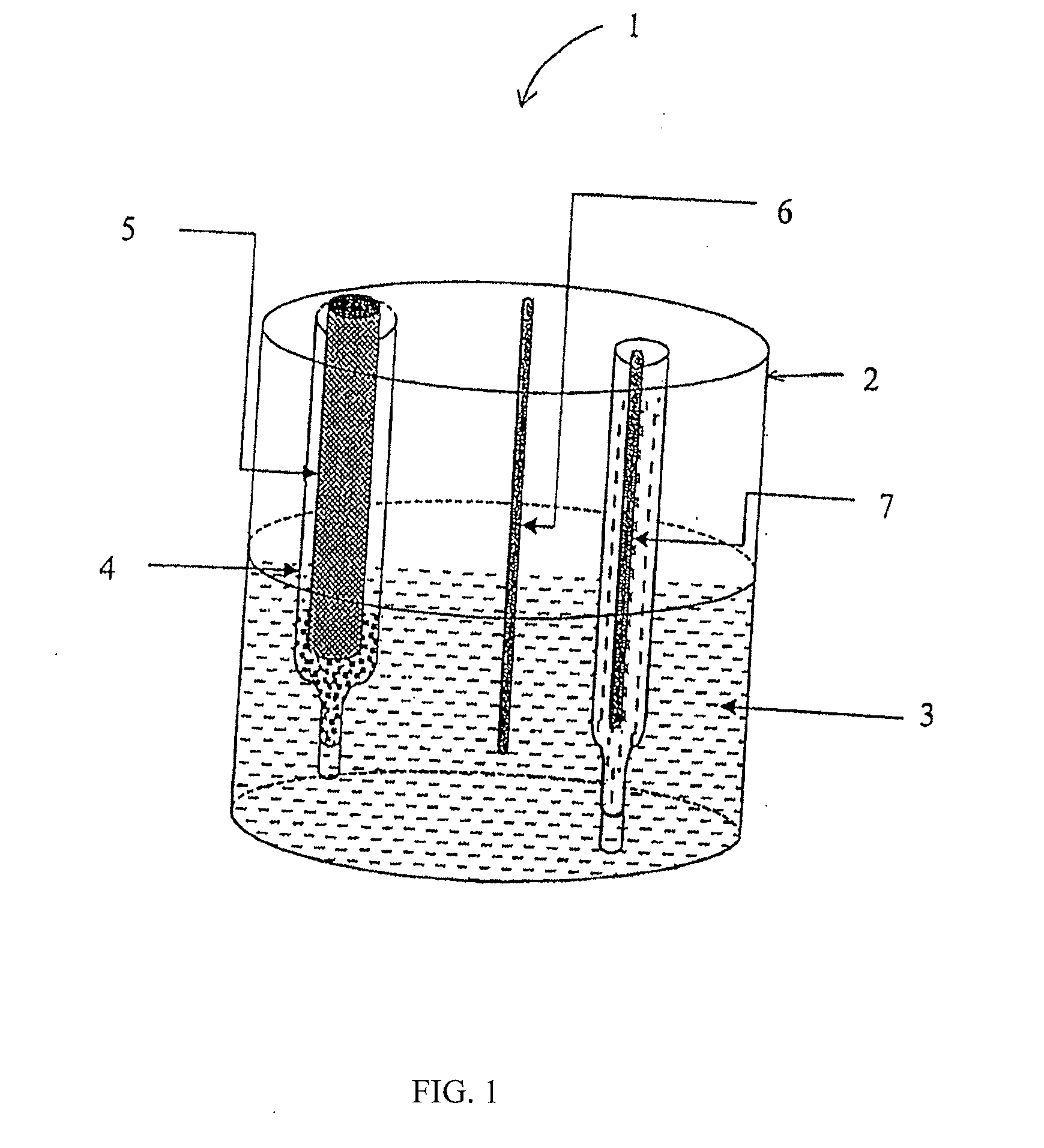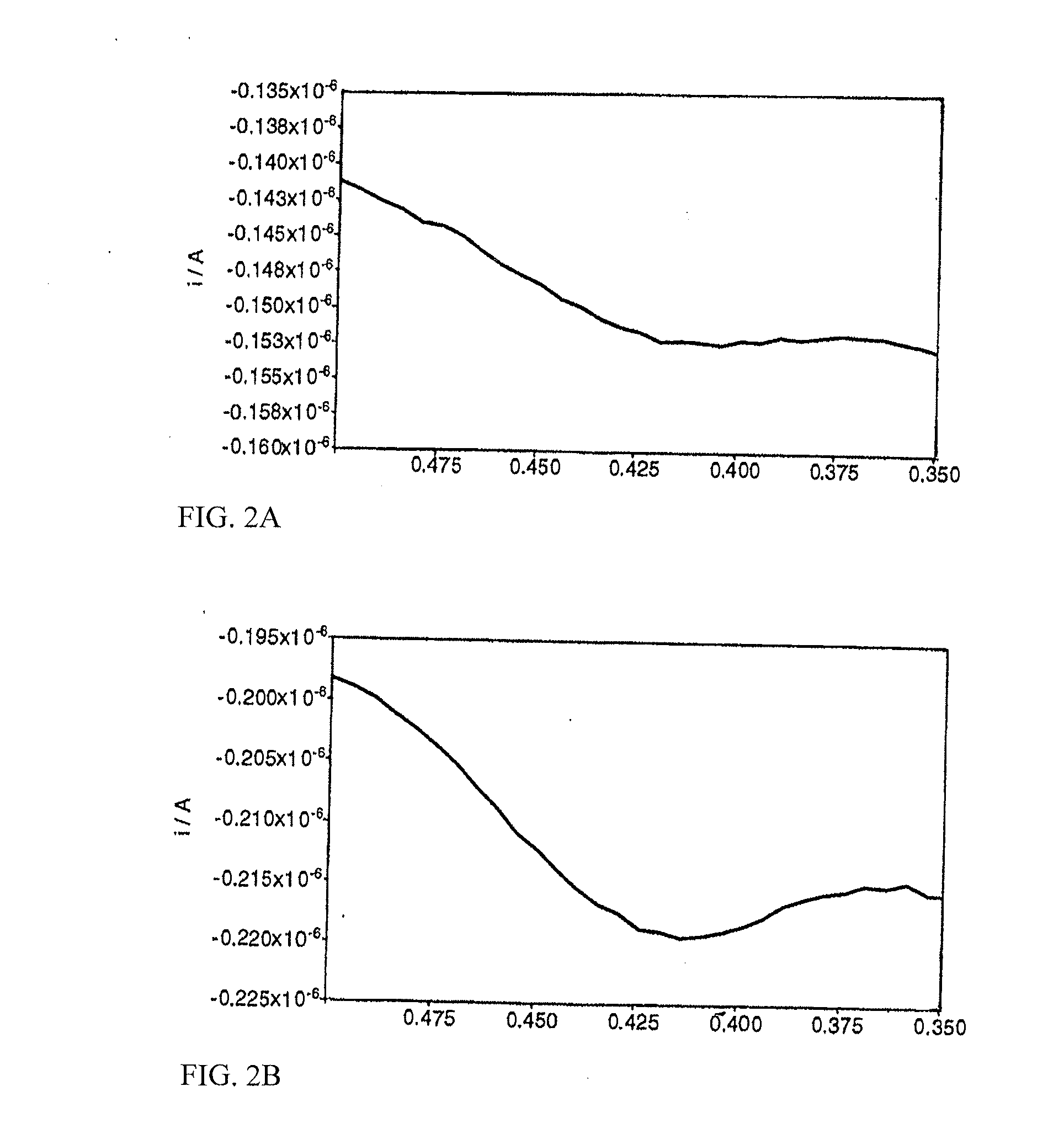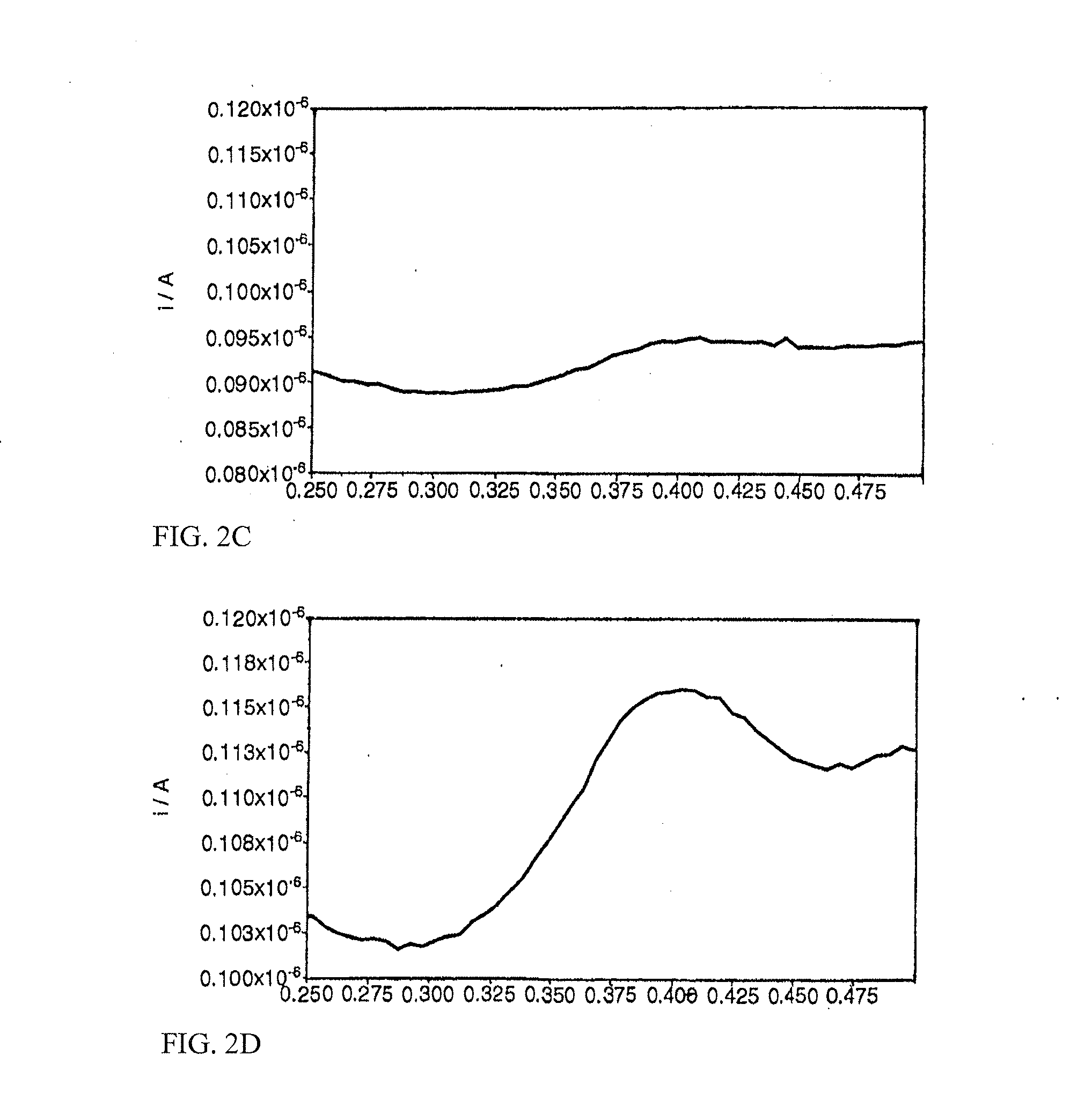Assays and Apparatus for Detecting Electrochemical Active Markers in an Electric Field
a technology of electrochemical active markers and apparatus, which is applied in the direction of instruments, material electrochemical variables, assay labels, etc., can solve the problems of reducing the shelf life of reagents and occupational health and environmental concerns, hindering the electrochemically active marker, and being unsuitable for automation
- Summary
- Abstract
- Description
- Claims
- Application Information
AI Technical Summary
Benefits of technology
Problems solved by technology
Method used
Image
Examples
example 2
Synthesis of N-Hydroxysuccinimide Ester of Ferrocenecarboxylic Acid
[0122]Ferrocenecarboxylic acid (303 mg, 1.32 mmol) and N-hydroxysuccinimide (170 mg, 1.47 mmol) were dissolved in dioxane (15 ml) and added with stirring to a solution of dicyclohexylcarbodiimide (305 mg, 1.48 mmol) in dioxane (3 ml). The mixture was stirred at room temperature for 24 hours during which time a precipitate was formed. The precipitate was removed by filtration, solvent was removed from the filtrate in vacuo and the resulting solid purified by silica gel column chromatography, eluting with 8:2 petrol:ethyl acetate. Yield 320 mg, 74%.
example 3
Synthesis of Ferrocenyl Oligonucleotides
[0123]Lyophilised amino-modified oligonucleotide was rehydrated in the correct volume of K2CO3 / KHCO3 buffer (500 mM, pH 9.0) to give an oligonucleotide concentration of 0.5 nmolμl−1. Amino-modified oligonucleotide (40 μl, 0.5 nmolμl−1) was added slowly with vortexing to a solution of the N-hydroxysuccinimide ester of ferrocenecarboxylic acid in DMF (40 μl, 375 mM). The solution was shaken at room temperature overnight. It was then diluted with ammonium acetate (920 μl, 100 mM, pH 7.0) and purified using two NAP 10 columns, eluting firstly with ammonium acetate (100 mM, pH 7.0), and then with autoclaved deionised water. Ferrocenylated oligonucleotides were partially purified by NAP 10 column to remove salt and low molecular weight ferrocene species to give a mixture of ferrocene labelled and unlabelled oligonucleotides. No further purification was carried out before use. Amino-modified oligonucleotides possessing four different linker structure...
example 4
[0124]Olignucleotide digestion reactions (100 μl) contained oligonucleotide (3.5-9 μM concentrations detailed below), ammonium acetate (250 mM, pH 6.5), zinc acetate (4.5 mM) and S1 Nuclease (0.4 Uμl−1). Reactions were incubated at 37° C. for 1 hour. Complete digestion of the oligonucleotide was confirmed by polyacrylamide gel analysis of a 10 μl aliquot of the crude reaction mix. Multiple reactions were pooled prior to voltammetric analysis, to give a final volume of 200 μl. By way of comparison, “no-enzyme” reactions were performed as described above, omitting S1 Nuclease from the reaction mixture. Heated enzyme controls were performed as described above, using S1 Nuclease that had previously been thermally denatured by heating at 95° C. for 15 minutes.
[0125]In the following, the reactants and conditions are as described above, and the voltammetry conditions are as given in Table 1 except where otherwise stated.
EXAMPLE 4(a)
[0126]Oligonucleotide: BAPR oligonucl...
PUM
| Property | Measurement | Unit |
|---|---|---|
| electric field | aaaaa | aaaaa |
| electrochemical | aaaaa | aaaaa |
| voltages | aaaaa | aaaaa |
Abstract
Description
Claims
Application Information
 Login to View More
Login to View More - R&D
- Intellectual Property
- Life Sciences
- Materials
- Tech Scout
- Unparalleled Data Quality
- Higher Quality Content
- 60% Fewer Hallucinations
Browse by: Latest US Patents, China's latest patents, Technical Efficacy Thesaurus, Application Domain, Technology Topic, Popular Technical Reports.
© 2025 PatSnap. All rights reserved.Legal|Privacy policy|Modern Slavery Act Transparency Statement|Sitemap|About US| Contact US: help@patsnap.com



